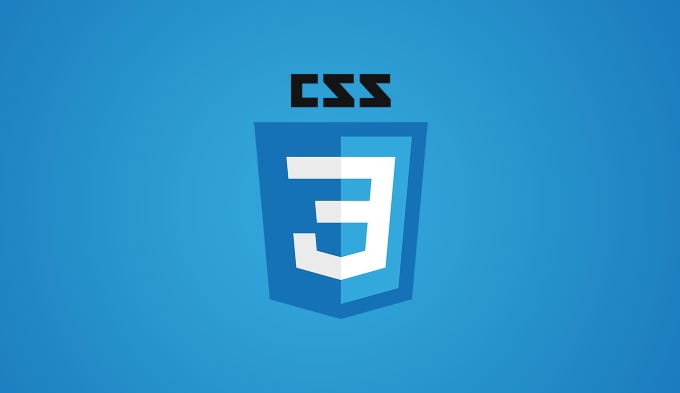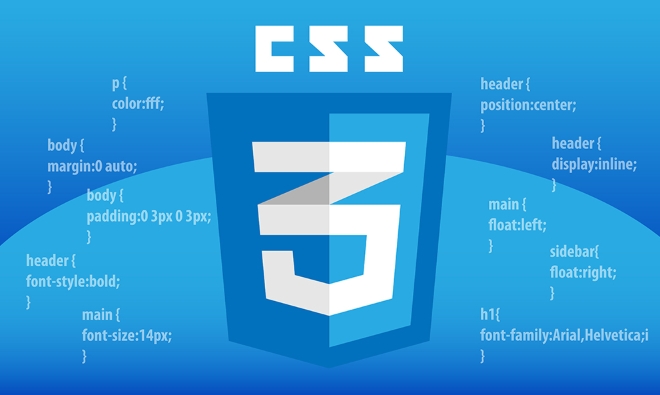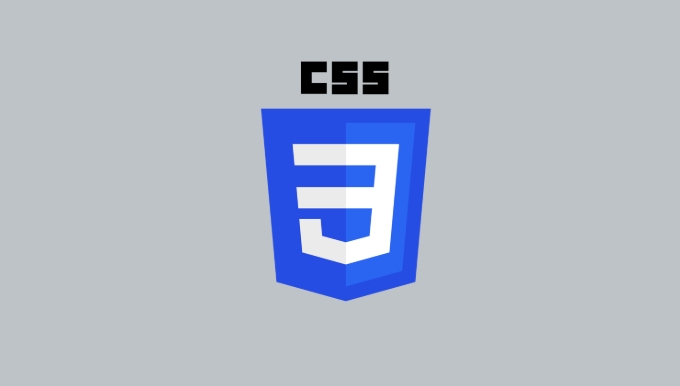The CSS transform attribute realizes the translation, rotation and scaling effects of elements through functions such as translate, rotate, scale. 1. translate is used for smooth movement, such as button hover displacement; 2. rotate is used to implement rotation animation, suitable for loading icons; 3. scale is used to create zoom feedback, such as image hovering; 4. Multiple functions can be used in combination to enhance visual effects without affecting layout and improve interactive experience.

The transform attribute of CSS is a very practical tool, especially when using it to create web page visual effects. If used well, it can make the page look more vivid and layered. It not only has simple displacement or rotation, but also combines animations, transitions, etc. to create many attractive small details.

How to use translate to achieve smooth movement
translate() is one of the most commonly used transform functions, used to move elements without changing the document stream. Compared to using position: relative or margin to adjust the position, translate is better in performance and animation performance.

For example, if you want to click a button and jump slightly to the upper right, you can use:
button:hover {
transform: translate(-5px, -5px);
} This effect is often used in scenes such as button interaction, card hovering, etc., giving people a feeling of "pressing and bounce up". If you use it with transition , you can also smooth the movement process.

Tips:
- Move multiple directions can be written as
translate(x, y), ortranslateX()andtranslateY()can be used separately. - The distance of movement is recommended to be controlled between 5~15px, as it is too large and it will easily appear abrupt.
Use rotate to create rotation animation
rotate() can rotate elements around the center point, and is often used in scenes such as loading icons, icon switching, menu expansion, etc.
For example, a refresh button continues to rotate when loading:
.loading {
animation: spin 1.2s linear infinite;
}
@keyframes spin {
from { transform: rotate(0deg); }
to { transform: rotate(360deg); }
} It should be noted that the default rotation center is the element center. If you want to change it to the upper left corner or other position, you need to use it with transform-origin .
Common uses include:
- Changes in status after button click
- Transition when icon switches
- Menu Expand/Close animation
Visual feedback from scale
scale() can zoom in or out of element, which is very suitable for user feedback effects such as mouse hovering to increase, clicking and scaling.
For example, common image hovering effect:
img {
transition: transform 0.3s ease;
}
img:hover {
transform: scale(1.1);
} This method is more natural than changing width and height directly, and it will not affect the layout. However, be aware that scaling exceeds 1.2 times may cause elements to overlap or overflow the container, and the layout space needs to be considered in advance.
In addition, negative values ??such as scale(-1) can also achieve mirror flip, which is suitable for some special UI effects.
Use with multiple transform functions
CSS allows you to superimpose multiple functions in the same transform property, and as long as the order is correct, it can produce complex and smooth effects.
For example, when a button is clicked, it can be scaled and rotated at the same time:
button:hover {
transform: scale(1.05) rotate(2deg);
}Note that the order will affect the final effect, such as rotating first and then translation, and translation first and then rotation, the result may be different.
Common combinations are:
-
scale rotate: Enhanced visual feedback -
translate scale: simulates "bounce" effect -
rotate skew: Create a tilt dynamic style
Basically that's it. The power of transform is actually much more than that, but its advantage is that it is simple and easy to use, and a little bit of it can improve the overall experience.
The above is the detailed content of Using CSS transform properties for visual effects. For more information, please follow other related articles on the PHP Chinese website!

Hot AI Tools

Undress AI Tool
Undress images for free

Undresser.AI Undress
AI-powered app for creating realistic nude photos

AI Clothes Remover
Online AI tool for removing clothes from photos.

Clothoff.io
AI clothes remover

Video Face Swap
Swap faces in any video effortlessly with our completely free AI face swap tool!

Hot Article

Hot Tools

Notepad++7.3.1
Easy-to-use and free code editor

SublimeText3 Chinese version
Chinese version, very easy to use

Zend Studio 13.0.1
Powerful PHP integrated development environment

Dreamweaver CS6
Visual web development tools

SublimeText3 Mac version
God-level code editing software (SublimeText3)

Hot Topics
 CSS tutorial for creating loading spinners and animations
Jul 07, 2025 am 12:07 AM
CSS tutorial for creating loading spinners and animations
Jul 07, 2025 am 12:07 AM
There are three ways to create a CSS loading rotator: 1. Use the basic rotator of borders to achieve simple animation through HTML and CSS; 2. Use a custom rotator of multiple points to achieve the jump effect through different delay times; 3. Add a rotator in the button and switch classes through JavaScript to display the loading status. Each approach emphasizes the importance of design details such as color, size, accessibility and performance optimization to enhance the user experience.
 Addressing CSS Browser Compatibility issues and prefixes
Jul 07, 2025 am 01:44 AM
Addressing CSS Browser Compatibility issues and prefixes
Jul 07, 2025 am 01:44 AM
To deal with CSS browser compatibility and prefix issues, you need to understand the differences in browser support and use vendor prefixes reasonably. 1. Understand common problems such as Flexbox and Grid support, position:sticky invalid, and animation performance is different; 2. Check CanIuse confirmation feature support status; 3. Correctly use -webkit-, -moz-, -ms-, -o- and other manufacturer prefixes; 4. It is recommended to use Autoprefixer to automatically add prefixes; 5. Install PostCSS and configure browserslist to specify the target browser; 6. Automatically handle compatibility during construction; 7. Modernizr detection features can be used for old projects; 8. No need to pursue consistency of all browsers,
 Styling visited links differently with CSS
Jul 11, 2025 am 03:26 AM
Styling visited links differently with CSS
Jul 11, 2025 am 03:26 AM
Setting the style of links you have visited can improve the user experience, especially in content-intensive websites to help users navigate better. 1. Use CSS's: visited pseudo-class to define the style of the visited link, such as color changes; 2. Note that the browser only allows modification of some attributes due to privacy restrictions; 3. The color selection should be coordinated with the overall style to avoid abruptness; 4. The mobile terminal may not display this effect, and it is recommended to combine it with other visual prompts such as icon auxiliary logos.
 Creating custom shapes with css clip-path
Jul 09, 2025 am 01:29 AM
Creating custom shapes with css clip-path
Jul 09, 2025 am 01:29 AM
Use the clip-path attribute of CSS to crop elements into custom shapes, such as triangles, circular notches, polygons, etc., without relying on pictures or SVGs. Its advantages include: 1. Supports a variety of basic shapes such as circle, ellipse, polygon, etc.; 2. Responsive adjustment and adaptable to mobile terminals; 3. Easy to animation, and can be combined with hover or JavaScript to achieve dynamic effects; 4. It does not affect the layout flow, and only crops the display area. Common usages are such as circular clip-path:circle (50pxatcenter) and triangle clip-path:polygon (50%0%, 100 0%, 0 0%). Notice
 What is the difference between display: inline, display: block, and display: inline-block?
Jul 11, 2025 am 03:25 AM
What is the difference between display: inline, display: block, and display: inline-block?
Jul 11, 2025 am 03:25 AM
Themaindifferencesbetweendisplay:inline,block,andinline-blockinHTML/CSSarelayoutbehavior,spaceusage,andstylingcontrol.1.Inlineelementsflowwithtext,don’tstartonnewlines,ignorewidth/height,andonlyapplyhorizontalpadding/margins—idealforinlinetextstyling
 How to create responsive images using CSS?
Jul 15, 2025 am 01:10 AM
How to create responsive images using CSS?
Jul 15, 2025 am 01:10 AM
To create responsive images using CSS, it can be mainly achieved through the following methods: 1. Use max-width:100% and height:auto to allow the image to adapt to the container width while maintaining the proportion; 2. Use HTML's srcset and sizes attributes to intelligently load the image sources adapted to different screens; 3. Use object-fit and object-position to control image cropping and focus display. Together, these methods ensure that the images are presented clearly and beautifully on different devices.
 What is CSS and what does it stand for?
Jul 03, 2025 am 01:48 AM
What is CSS and what does it stand for?
Jul 03, 2025 am 01:48 AM
CSS,orCascadingStyleSheets,isthepartofwebdevelopmentthatcontrolsawebpage’svisualappearance,includingcolors,fonts,spacing,andlayout.Theterm“cascading”referstohowstylesareprioritized;forexample,inlinestylesoverrideexternalstyles,andspecificselectorslik
 What is the CSS Painting API?
Jul 04, 2025 am 02:16 AM
What is the CSS Painting API?
Jul 04, 2025 am 02:16 AM
TheCSSPaintingAPIenablesdynamicimagegenerationinCSSusingJavaScript.1.DeveloperscreateaPaintWorkletclasswithapaint()method.2.TheyregisteritviaregisterPaint().3.ThecustompaintfunctionisthenusedinCSSpropertieslikebackground-image.Thisallowsfordynamicvis






